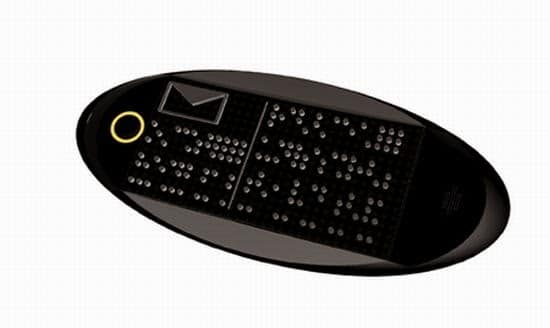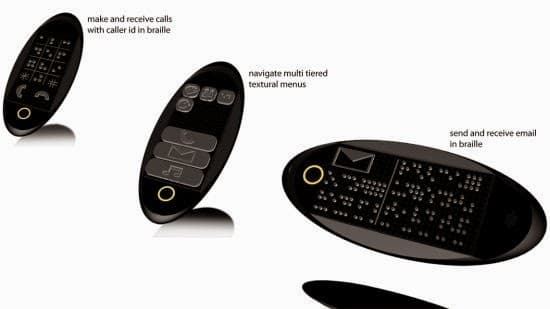There was once a time when dreams and reality were stark opposites but now there exists a thin line between dreams and the world we live in. How? The answer to this is technology. Yes, we have now come so far that now when we look back there is an entire century worth of technologies to be reviewed and infinite opportunities in front of us. But what use is it if it does not carry the entire human generation in its wake. If the single most powerful tool we have cannot be used to uplift those who are not well blessed, all these developments and inventions are in vain. But this aim is not forgotten, when robots are being developed for performing even simple household tasks, the less fortunate of our kind are not left behind. One such step, to empower the visually disabled, is the tactile phone concept. This is still an idea but we can all guarantee that the time has come when ideas are just a pavement for reality.
This concept phone dubbed the Tactile has come out to allow the visually impaired to access a variety of features on its multi-touch display. Using an array of conductive pins under the multi-touch display, the Tactile concept phone amalgamates digital information as pulses of electricity to the user’s fingertips that simulate a physical pressure in the nerves of the user’s fingertips. Each pin acts as a pixel of digital texture that can change as dynamically as a traditional display, allowing the blind to navigate multi-tiered menus and complex features using their heightened sense of touch. Now whatever that means, this innovative design sounds to suit the needs of the visually impaired and make these special people feel at home in this increasingly tech world. Tactile is the result of a design exercise conducted under the supervision of designers from Teague Product Studio in Seattle, WA addressing how a designer can imbue an object with a “product story” that enhances its value by connecting with the consumer on an emotional level. The development of Tactile began with the development of an abstract concept, which evolved into an expressive artifact and finally into a product.
This device is a beautiful amalgamation of latest technology with braille script to produce a phone fit for use for any visually disabled. Blind and visually impaired people (who rely on texture) are being left behind by the advancement of mobile phone technology. Recently research has begun in the field of electrotactile technology. While the technology is still early in its development, test subjects were able to recognize basic shapes using only their sense of touch across an array of conductive pins. Tactile is a future application of this technology, which engages the sense of touch by sending digital information as pulses (beats) of electricity to the user’s fingertips which is interpreted by their nerves as a physical texture. This is the real use of the knowledge human race has gained over the centuries. This phone is a challenge which if fulfilled will bind all the human race together, it will prove that the disabled are not forgotten. That we still do CARE.



